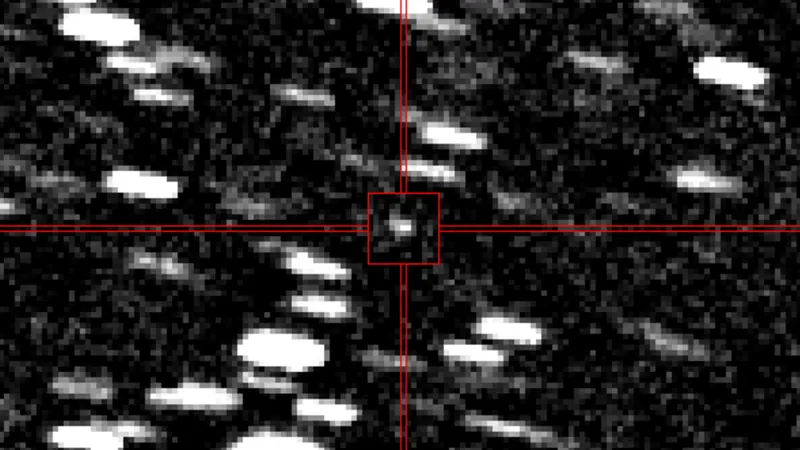
Astronomers Discover Mysterious 'Interstellar Visitor' A11pl3Z Racing Towards Earth!
2025-07-02
Author: Yan
Astronomers have made an exhilarating discovery: a potential 'interstellar object' named A11pl3Z zooming through our solar system, and it's heading straight for us! This celestial traveler could be one of only three such objects ever detected, set to make its closest approach to the sun in about four months before embarking on a journey out of our cosmic neighborhood for good.
First observed in data collected between June 25 and June 29, A11pl3Z was identified by the Asteroid Terrestrial-impact Last Alert System (ATLAS), which utilizes telescopes located in Hawaii and South Africa to monitor the night sky. NASA's Center for Near Earth Object Studies and the International Astronomical Union's Minor Planet Center confirmed this exciting find on July 1.
So, what exactly is A11pl3Z? Experts suggest it’s likely a large asteroid or perhaps a comet, potentially measuring up to 12 miles (20 kilometers) across. Racing towards the inner solar system at a staggering speed of 152,000 mph (245,000 km/h), it originates from a part of the sky rich in the Milky Way's galactic bar.
With its incredible speed and trajectory, astronomers believe A11pl3Z has burst forth from beyond the sun's gravitational pull, hurtling through our cosmic enclave on a direct course without slowing down. However, further observations are necessary to confirm these theories.
To date, Astronomers have confirmed only two interstellar visitors: Comet 2I/Borisov, spotted in 2019, and 'Oumuamua, a cigar-shaped object that intrigued scientists in 2017 when some suggested it could be an alien probe, though further analysis revealed it was likely a hydrogen-emitting rock.
Interestingly, researchers suspect that countless more interstellar bodies traverse our cosmic domain unnoticed.
At the moment, A11pl3Z is approximately 3.8 times farther from the sun than Earth. Its first significant encounter will occur on October 3, when it swings close to Mars, followed by its closest approach to the sun, known as perihelion, on October 23. It will come within twice the distance between Earth and the sun, as reported by Universe Today.
Fear not, Earthlings! During this solar flyby, Earth will be positioned on the opposite side of the sun from A11pl3Z, meaning there is no threat to our beloved planet. The object is poised to make its nearest approach to Earth in December as it ventures back into deep space.
Researchers are gearing up to study A11pl3Z over the coming weeks and months to unveil more about its size, shape, and intriguing origins. Thanks to advancements in observational technology, we are equipped better than ever to track and image this mysterious space rock.
Excitingly, the Vera C. Rubin Observatory, the world’s most powerful optical telescope, is expected to be fully operational by the time A11pl3Z is closest to us. This exceptional telescope specializes in detecting moving objects like asteroids, making it a vital tool for understanding this interstellar visitor.



 Brasil (PT)
Brasil (PT)
 Canada (EN)
Canada (EN)
 Chile (ES)
Chile (ES)
 Česko (CS)
Česko (CS)
 대한민국 (KO)
대한민국 (KO)
 España (ES)
España (ES)
 France (FR)
France (FR)
 Hong Kong (EN)
Hong Kong (EN)
 Italia (IT)
Italia (IT)
 日本 (JA)
日本 (JA)
 Magyarország (HU)
Magyarország (HU)
 Norge (NO)
Norge (NO)
 Polska (PL)
Polska (PL)
 Schweiz (DE)
Schweiz (DE)
 Singapore (EN)
Singapore (EN)
 Sverige (SV)
Sverige (SV)
 Suomi (FI)
Suomi (FI)
 Türkiye (TR)
Türkiye (TR)
 الإمارات العربية المتحدة (AR)
الإمارات العربية المتحدة (AR)